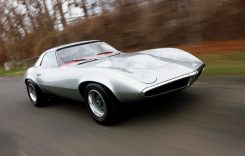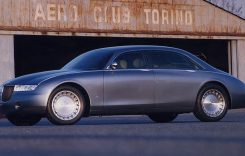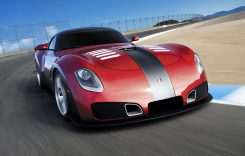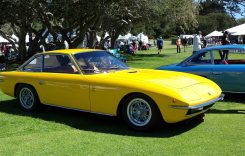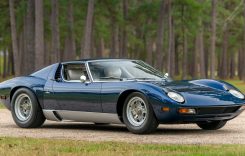This futuristic car was kept so under wraps that during the design phase, it had its own code name RD 001. The 1969 Holden Hurricane, the name given to this concept car, was restored to its former glory by a dedicated set of Holden engineers and designers. The original inspiration behind the car was to create a vehicle that used the newest design influence and used the power of propulsion to create a car of the future.
This two seater mid engined, rear-wheel drive sports car was so much ahead of its counterparts at the time and it managed to combine innovative technology and the latest features. These included features such as the station-seeking radio tuner, intelligent automatic temperature controlled air conditioning, rear vision camera, automated route finder and electronic digital instrument displays. Many of these features are highlighted in the cars of today so in 1969 Holden was very advanced in its time when it came to design and technical engineering.
The 1969 Melbourne Motor Show debuted the Holden Hurricane and visitors were in awe of the concept car. The GMH Research and Development organisation put together a small team of engineers who worked closely with the Advance Styling Group at the Fisherman’s Bend Technical Centre.
Together they produced the Holden Hurricane and the whole of the motoring industry stopped and took note. The team decided to focus on the powertrain and using the latest technological techniques, the vehicle was given a powerful 4.2 litre (253 cubic inch) V8 engine and this went on to inspire the Holden V8 engine program that commenced production in 1969. The V8 engine in the Holden Hurricane used the latest components such as a four-barrel carburettor.
This component did not make it to production until the late 1970s when the 253ci Holden V8 first made its appearance. The data speaks for itself with an impressive 262 hp (193 kiW). By 1969 standards, there were no other competitors in the show. The Hurricane was true to its name sake, and caused an absolute storm amongst the attendees. This period in car history predated the GPS navigation system, but this did not hold the Hurricane back.
The design team created the ‘Pathfinder’ which ingeniously used a system of magnets embedded at intersections along the road to guide a vehicle to the required destination. On the dash board, a panel was mounted which confirmed the direction the driver was to take by illuminating directional arrows and creating a warning sound to grab the driver’s attention.
Using the concept of closed circuit television CCTV system, a camera was positioned in the rear bumper of the vehicle which gave a live feed in black and white to a TV located in the centre console. Doing away with the boring convention of doors, driver and passengers enter the 990 mm high vehicle through a hydraulically powered canopy which opens in an upward and forward motion over the front wheel.
There are twin racing driver style seats in the front which pivot on an axis giving an extensive range of movement including the ability to rise up and move forward as and when required together with the steering wheel for great ergonomics and easy accessibility. As the doors close, the seats gently recline in preparation for the drive. The fibreglass body was wind tunnel tested and split into three sections, comprising of the canopy the engine hood and body shell.
The body was then coated with an innovative aluminium flake-based metallic orange paint. Safety was an important feature in this vehicle. The fuel tank was foam lined and the body featured an integrated roll-over bar. The car readings are supplied to a digital instrument monitor.
The vehicle has interior padding, ignition safety locks and a fire warning system. The restoration project began in 2006 and it really was a restoration of passion because the project was largely supported by volunteers working in their spare time from Holden design and engineering teams to lovingly restore this vehicle to its original former glory.

The task was a challenge for the volunteers because they had rescued the vehicle from a trade school where trainees were practising their welding skills. The Hurricane was in a very damaged state as you can imagine. So after thousands of man hours spent painstakingly restoring the vehicle the RD001 was transformed and brought back to its former incredible self.
The driver behind this restoration project was Paul Clark, Holden’s Manager for Creative Hard Modelling. Managing and overseeing the project, he was particular about using as many original parts as possible. Obsolete parts were remade using 1969 techniques and specifications.
Originality and authenticity were important drivers of this project. The evidence is clearly visible in the finished product. Visitors to the car show are instantly transported back to 1969 and even today the Holden Hurricane continues to make ripples on the way we manufacture cars.
